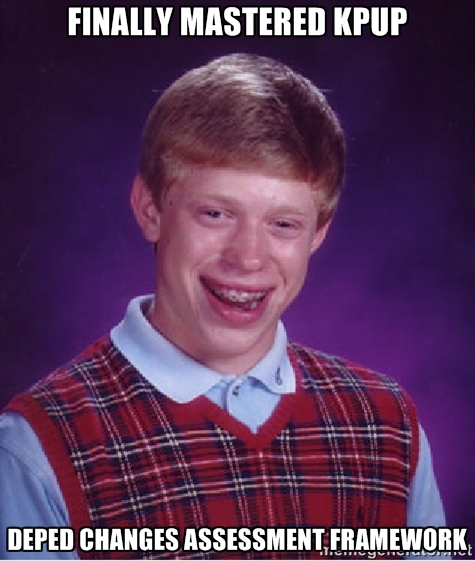After a couple of takes (Grade Conscious, Measuring What?) on how DepEd plans to assess learning in the new K-12 system, they’ve gone and revised the assessment framework yet again.
DepEd Order 8 Series 2015 provides the details on the new framework. The underlying principles remain the same but instead of KPUP, they’ve reworked the levels of assessment to the simpler: Written Work (WW), Performance Tasks (PT), and Quarterly Assessment. The document defines them as such:
Written Work (WW)
- Assess learners’ understanding of concepts and application of skills in written form
- Prepare learners for quarterly assessments
Given at end of the topic or unit
Performance Tasks (PT)
- Involve students in the learning process individually or in collaboration with teammates over a period of time
- Give students opportunities to demonstrate and integrate their knowledge, understanding, and skills about topics or lessons learned in a specific real-life situation by performing and/ or producing evidence of their learning
- Give students the freedom to express their learning in appropriate and diverse ways
- Encourage student inquiry, integration of knowledge, understanding. and skills in various contexts beyond the assessment period
Given at end of a lesson focusing on a topic/ skill lesson or several times during the quarter
Quarterly Assessment (QA)
Synthesize all the learning skills. concepts, and values learned in an entire quarter
Given once, at end of the quarter
These new components of summative assessment appear to be a compromise or a bridge between KPUP and the old ways of doing things. A part of educators’ problem with KPUP is that the delineation between the levels of assessment are, in reality, blurred and overlap. This overlap combined with their clear-cut percentages for use in grading confused many teachers on how they’d deal with activities and scores in their grade book.
These new summative assessment components appear to be straightforward are simpler to understand.
My concern now is that I hope that this simpler framework not limit teachers’ imaginations on how the many activities that they could use to assess learning.

